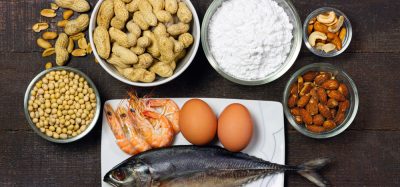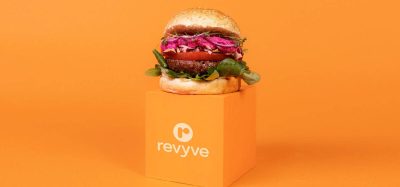The role of dietary fibre in gluten-free bakery products
- Like
- Digg
- Del
- Tumblr
- VKontakte
- Buffer
- Love This
- Odnoklassniki
- Meneame
- Blogger
- Amazon
- Yahoo Mail
- Gmail
- AOL
- Newsvine
- HackerNews
- Evernote
- MySpace
- Mail.ru
- Viadeo
- Line
- Comments
- Yummly
- SMS
- Viber
- Telegram
- Subscribe
- Skype
- Facebook Messenger
- Kakao
- LiveJournal
- Yammer
- Edgar
- Fintel
- Mix
- Instapaper
- Copy Link
Posted: 13 December 2016 | Clara Talens; Saioa Alvarez-Sabatel; Yolanda Ríos, AZTI | No comments yet
The market for gluten-free products that are nutritious and palatable is growing exponentially as more people are choosing a gluten-free diet out of necessity or personal preference…
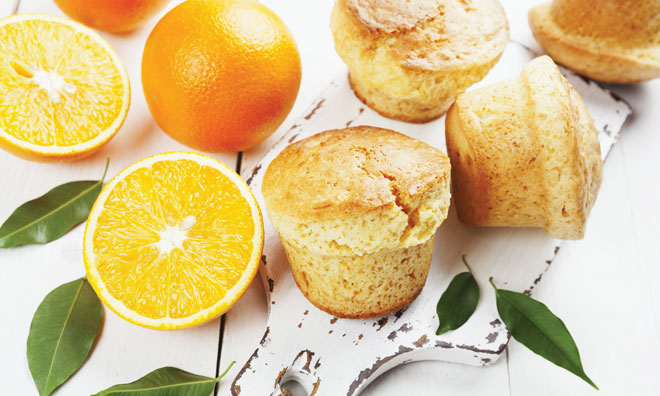

Muffins and biscuits are very popular sweet leavened baked products consumed widely as breakfast or evening snack foods. These are highly prized by consumers due to their good taste and attractive texture. Traditionally, their formula is mainly composed of wheat flour, sugar, vegetable oil, egg and milk. For this reason, people with coeliac disease are unable to consume this type of baked product due to the incorporation of wheat flour.
Gluten-free baked products often present quality defects and low nutritional value, in addition to an increased final price due to the amount of ingredients used to replace gluten. They exhibit low volume, poor colour and crumbling crumb, besides great variation in the nutrient composition. Results from a number of recent studies have highlighted the need for an improvement in the nutritional quality of cereal-based gluten-free products. Vici et al. (2016)1 studied the nutritional quality of a gluten-free diet and its impact on specific nutrients such as fibre, finding that low levels of fibres persisted in some coeliac patients. Therefore, the technological challenge of replacing the gluten-network is not the only one to overcome by the gluten-free industry.
The addition of fibre to gluten-free products is a common strategy for increasing the nutritional value of gluten-free products while improving its texture and mouthfeel. The ability of the fibre to swell after water absorption is its principal physiological and technological effect. In gluten-free baked products fibre addition – as well as the type of fibre used – affect the properties of the network developed among ingredients, leading to changes in the batter´s viscosity; the entrapment of air bubbles; and/or starch gelatinisation behaviour among other properties2,3. Besides, gluten-free products present poor protein structure forming ability, which lessens the sensory quality4 . As a consequence, texture and sensory properties are highly affected by gluten substitution and fibre addition.
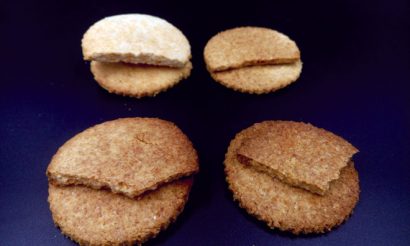

In order to increase dietary fibre in gluten-free products, ingredients from different sources can be incorporated into the recipe as a substitute for gluten. In particular, the by-products obtained from fruit and vegetable processing (e.g. juices) are gaining attention as novel and economic sources of healthy functional ingredients. Food producers are currently responsible for disposing of these by-products through incineration, landfill, or via animal feed which has the potential to negatively affect the environment. Fibres from food by-products have been used to improve the nutritional and sensory profiles of gluten-free products in several studies: potato peels, apple pomace, and orange pomace.
AZTI, in collaboration with Universidad Politécnica de Valencia, has studied the application of a combined drying technique for obtaining a fibre ingredient from orange byproducts. This technique consists of coupling microwaves to hot air drying which results in a more efficient drying process that positively affects the orange fibre’s technological properties such as swelling and water retention capacity5 . Furthermore, the nutritional profile of the fibre ingredient obtained shows higher levels of total dietary fibre as well a higher ratio of soluble to insoluble dietary fibre, compared to other commercial citrus fibres available on the market.
The improved fibre ingredient has been studied at AZTI by formulating gluten-free muffins and biscuits and comparing them to the same products with commercial citrus fibre. In the experiments performed the impact of using two different types of fibre in these two gluten-free products were analysed by instrumental texture determinations and sensory profile.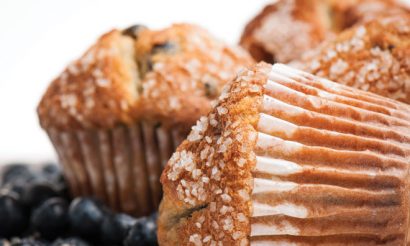

Texture Profile Analysis (TPA) results indicated that orange fibres obtained by coupling microwaves to hot air drying produce muffins with higher values for chewiness and hardness attributes than when using commercial orange-fibre. When the same fibres were used to produce biscuits, instrumental texture measurement indicated no significant differences among the two types of orange fibres for fracturability and crumbliness. Biscuits with commercial orange fibre were significantly harder.
Sensory evaluation of gluten-free products was performed by a quantitative test, applying a structured 6-point scale – from 0 (not perceptible) to 5 (very intense) – using trained panellists. Results showed significant differences between orange fibres regarding appearance attributes of the gluten-free muffins: orange fibres obtained by coupling microwaves to hot air drying produce muffins with a more orange crumb. The differences in texture detected by the instrumental analysis of the muffins were not perceived by panellists. For biscuits, no significant differences among the two types of orange fibres were found for appearance, aroma, flavour or texture. However, 100 % of panellists preferred the muffins and biscuits with orange fibres obtained by coupling microwaves to hot air drying compared to muffins and biscuits with commercial citrus fibre.
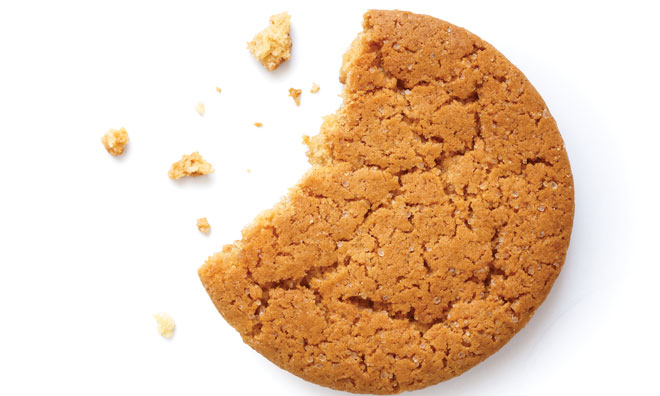

In conclusion, no significant differences were found regarding texture (except for hardness), or sensory properties for gluten-free biscuits or muffins obtained with fibre from orange by-products compared to commercial citrus fibre. Furthermore, all panellists preferred the muffins and biscuits with orange fibres obtained by coupling microwaves to hot air drying. Therefore, the application of combined technologies for creating new food structures represents a potential alternative for citrus by-products valorisation and transformation into value-added ingredients suitable for gluten-free baking.
Acknowledgements
The authors would like to acknowledge the Basque Government for the financial support of project ELIKATEK, and also Dr Pedro J. Fito and Dr Marta Castro-Giraldez from Instituto Universitario de Ingeniería de Alimentos para el Desarrollo (IuIAD) at Universidad Politécnica de Valencia (Spain), for their supervision designing the combined drying process.
About the authors


Clara Talens, Researcher at AZTI
Clara Talens has a PhD in Food Science, Technology and Management from Universidad Politécnica de Valencia and is Researcher at AZTI. Her expertise is based on research and innovation focused on offering solutions to the food industry, managing public and private funded R&D projects from idea generation to market. She has also investigated the effect of new processing technologies on food properties for optimising functionality; ingredient solution for nutritional and health claims; product formulation; process design and industrial scale-up.


Saioa Alvarez-Sabatel, Researcher at AZTI
Saioa Alvarez-Sabatel gained her PhD and MsC on Food Quality and Safety at the University of the Basque Country (Spain). Her research at AZTI is devoted to the impact of emerging food processing technologies on food microstructure, with special focus on emulsions and ingredients technological functionality, as well as the relationship of physico-chemical parameters with oral processing and sensory perception.


Yolanda Ríos, Researcher at AZTI
Yolanda Ríos is a food researcher at AZTI and has an MsC on Food Quality and Safety from the University of the Basque Country (Spain). She is a researcher in Sensory and Consumer Sciences and has experience in design and development of new food products. She is currently involved in consumer behaviour and market studies (benchmarking, food preferences, emotions, consumer habits and expectations). She also works in food quality control, sensory characterisation, optimisation of new food products and shelf life studies.
References
- Vici, G., Belli, L., Biondi, M., & Polzonetti, V. (2016). Gluten free diet and nutrient deficiencies: A review. Clinical Nutrition
- Gularte, M. A., de la Hera, E., Gómez, M., & Rosell, C. M. (2012). Effect of different fibres on batter and gluten-free layer cake properties. LWT – Food Science and Technology, 48(2), 209–214
- Sabanis, D., Lebesi, D., & Tzia, C. (2009). Effect of dietary fibre enrichment on selected properties of gluten-free bread. LWT – Food Science and Technology, 42(8), 1380–1389
- Jambrec D., et al., Development and application of descriptors for establishing sensory profile of gluten-free cookies by a multidimensional approach, Food and Feed Research 39 (1), 41-49, 2012
- Talens, C., Arboleya, J. C., Castro-Giraldez, M., & Fito, P. J. (2017). Effect of microwave power coupled with hot air drying on process efficiency and physico-chemical properties of a new dietary fibre ingredient obtained from orange peel. LWT – Food Science and Technology, 77, 110-118.




